Morgan Rogers wasn’t named in the latest England squad, but that shouldn’t be seen as a reflection of the Aston Villa talent’s eye-catching start to the 2024-25 Premier League season.
It might not be strictly accurate to call Morgan Rogers’ rise “rapid” given he got his first experience of first-team football as a 17-year-old and is now 22. But he’s unquestionably enjoyed an impressive ascension over the past 18 months or so, to the extent that he’s arguably unfortunate to have not broken into the senior England squad yet.
The fact many UK publications on Thursday thought it newsworthy that Rogers wasn’t included in Lee Carsley’s selection for upcoming UEFA Nations League games against Greece and Finland spoke volumes.
Indeed, Aston Villa boss Unai Emery scoffed at the fact Rogers was only involved with the England Under-21s during the first international window of the 2024-25 season, saying: “What is a player like Morgan Rogers gaining by playing for the Under-21s? He is not a player for the second team.”
Alas, England fans will have to wait to see Rogers blasting through midfields on the international stage, but on the evidence of his adaptation to the Premier League, especially this season, he’ll not remain uncapped at senior level for long.
It’s not an exaggeration to say Rogers has been one of the standout players during the early weeks of the 2024-25 season. Perhaps not in terms of easily measurable attacking outputs like goals and assists, with Erling Haaland, Cole Palmer, Mohamed Salah and Bukayo Saka among the many with a greater impact there.
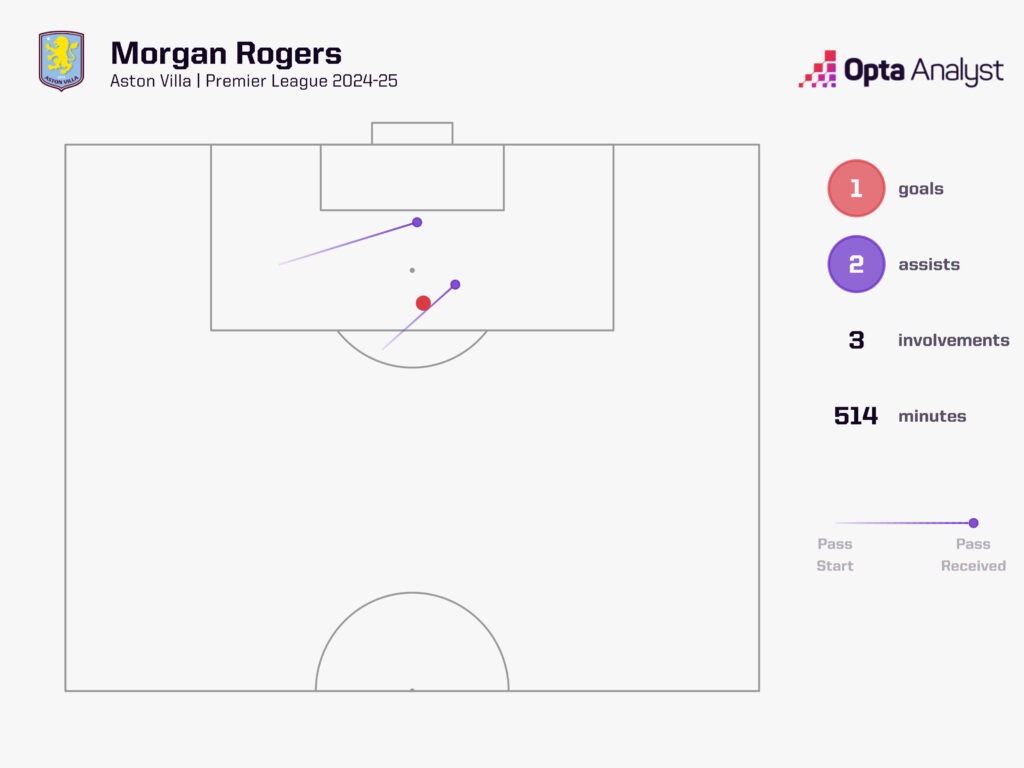
But in purely aesthetic terms, Rogers has been a joy to watch as he establishes himself as a rising star in the Premier League, standing out to fans and neutrals alike with his ominous bursts and tidy footwork.
There really aren’t many midfielders, let alone attacking midfielders, like him in the Premier League. Rogers boasts a broad range of valuable assets in that he possesses considerable strength and running power, is comfortable receiving the ball on the half-turn, has a forward-thinking mentality and is blessed with excellent technique.
Villa has been the perfect place for him to explore and capitalise on that skillset, and he’s now thriving. But that doesn’t make his more recent rise any less surprising.
Having been bought by Manchester City shortly after his West Brom debut in 2019, Rogers spent a couple of years playing in City’s academy teams before a succession of loans in the English Football League.
He turned out for Lincoln City in League One before making the step up to the Championship with Bournemouth, where – by his own admission – he struggled with homesickness and his attitude.
A spell with Blackpool followed in 2022-23 and he ultimately went on to suffer relegation from the Championship with them, providing another difficult learning experience for the youngster. But there, Rogers seemingly showed enough ability to catch the eye of Middlesbrough, who’d begun to focus on bringing in young talent in order to develop and sell on at profit.
Rogers is rumoured to have cost Middlesbrough about £1 million initially in July 2023; a little over six months later, Villa signed him in a deal potentially worth up to £15m. That, too, was deemed a surprise to many as, regardless of the potential he’d shown at the Riverside Stadium, there was a consensus he’d only really settled and found form around November 2023.
Much of Rogers’ formative years saw him take up a variety of positions, though he was mostly regarded as something of a forward or winger.
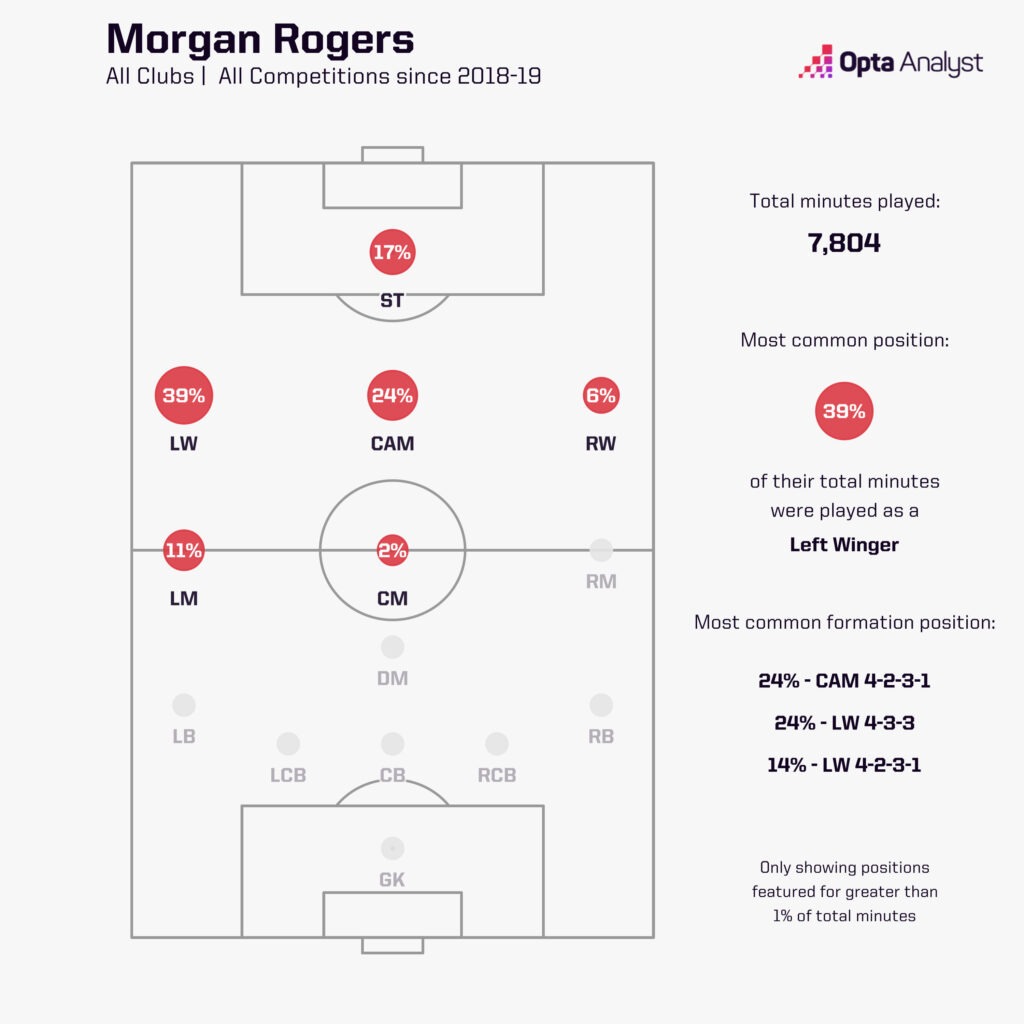
At Middlesbrough, however, he was used more as a roaming No.10, making more touches per 90 in the central zone immediately outside the area than anywhere else on the pitch. It’s in a similar role that he’s found himself at home with Villa this season.
In 2023-24 following his move to Villa, Rogers still quite often found himself out towards the left, but this term he’s operating almost entirely within the width of the penalty area, using his explosiveness to drive at the heart of opponents, and picking up pockets of space around Ollie Watkins.
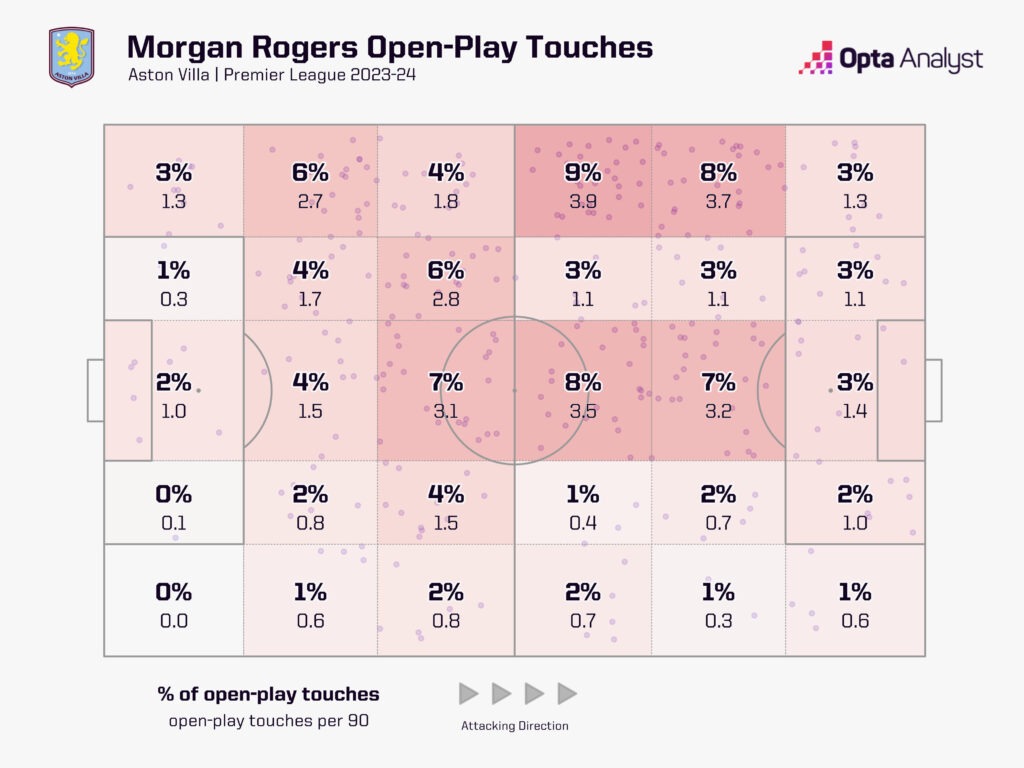
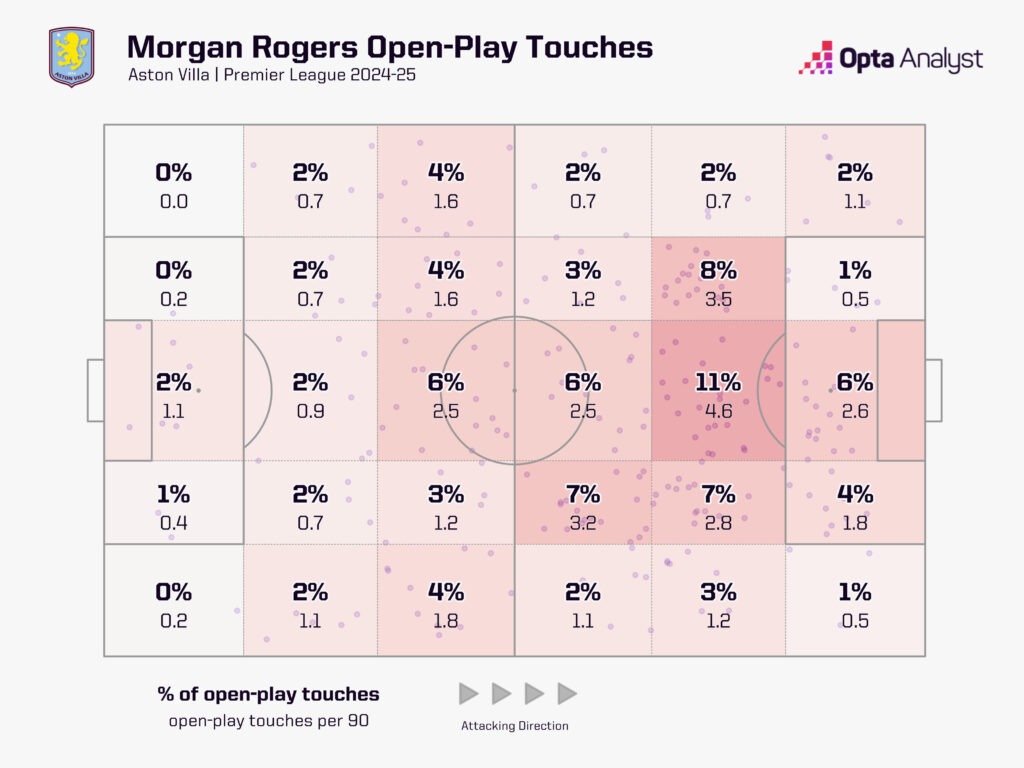
But what makes Rogers such an asset to Villa is that he adds another dimension to the team’s broader system.
For instance, Villa aren’t really a transition-focused team (where ‘transition’ is defined as the number of opportunities that the team in possession had to attack a transitioning defence) – at least not in the way that Bournemouth and Tottenham could be perceived. After all, in the Premier League this season, Villa’s 66 transitions reaching the final third is the fifth fewest.
But Rogers’ technical skill combined with his positivity and drive from midfield can help Villa up the pitch very quickly, perhaps catching opponents off guard. He stood out especially in this manner in arguably the team’s two biggest games of the season to date: the somewhat unfortunate 2-0 defeat by Arsenal, and Wednesday’s famous 1-0 win over Bayern Munich in the UEFA Champions League.
His ability to carry the ball shone in both matches, having the agility to tie opponents in knots with weaving runs and the strength to shrug challengers off – like a (well-trained) bull on ice skates.
It probably won’t be that surprising, then, to anyone who’s watched him this season that only four central, defensive or attacking midfielders have progressed the ball from carries upfield further than him in the Premier League in 2024-25 (502 metres).
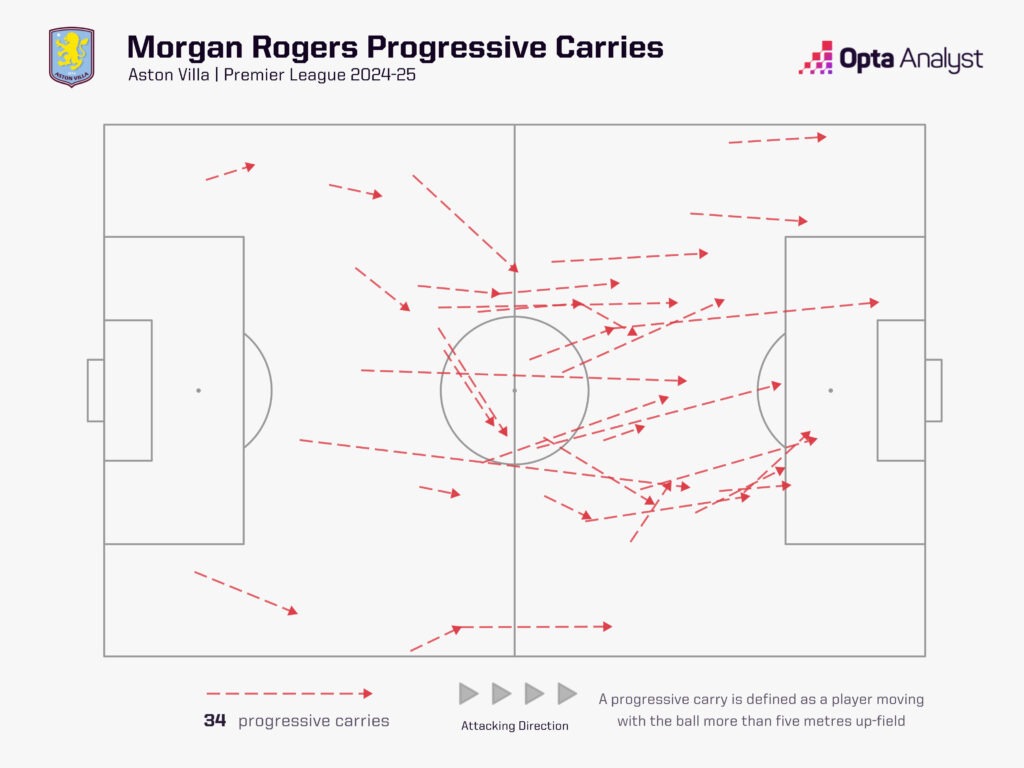
Among the same players (minimum 130 minutes played), Rogers is top of the pile for average distance of his carries (13.1m) and third for average distance he’s progressed play upfield via carries (8.8m).
These points are helped by the fact his 21 progressive carries of 10m+ is the fifth most when compared with that same group of midfielders. This not only potentially helps Villa charge through gaps in midfield, he also gives them another weapon on the break.
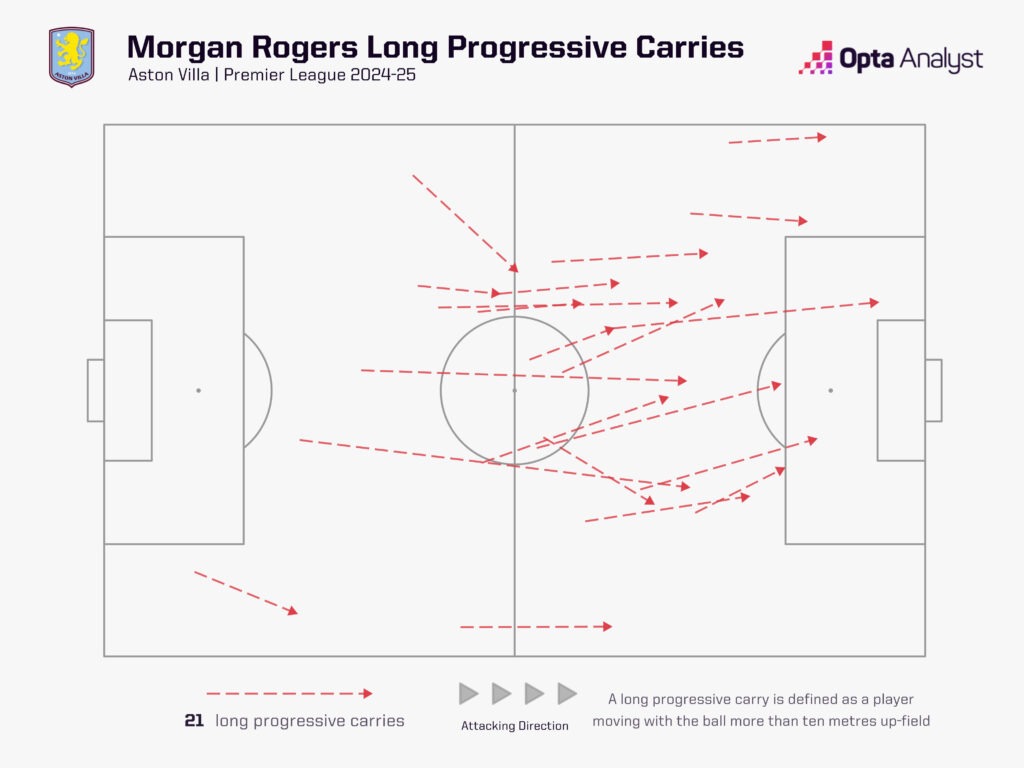
So, while Villa don’t rank highly when it comes to catching teams out in transition, they are effective on the counter; last season their 39 fast breaks (defined as quickly turning defence into attack after winning the ball in own half) and seven goals from such situations were both the fourth highest. This term, their eight fast breaks is bettered by only four teams.
Rogers’ skillset clearly fits this system well; we can even quantify how direct he is by dividing his total progressive carry distance by total carry distance, which gives us 67% – only five midfielders have been more direct in the Premier League this season.
But it’s also worth highlighting his on-pitch relationship with Watkins, as briefly alluded to before. Rogers operates in an advanced role and so quite frequently finds himself in close quarters with Villa’s primary centre-forward.
Both players have good offensive awareness and so a give-and-go or cute pass round the corner to the other isn’t uncommon, and they clearly have a good understanding of how the each other thinks.
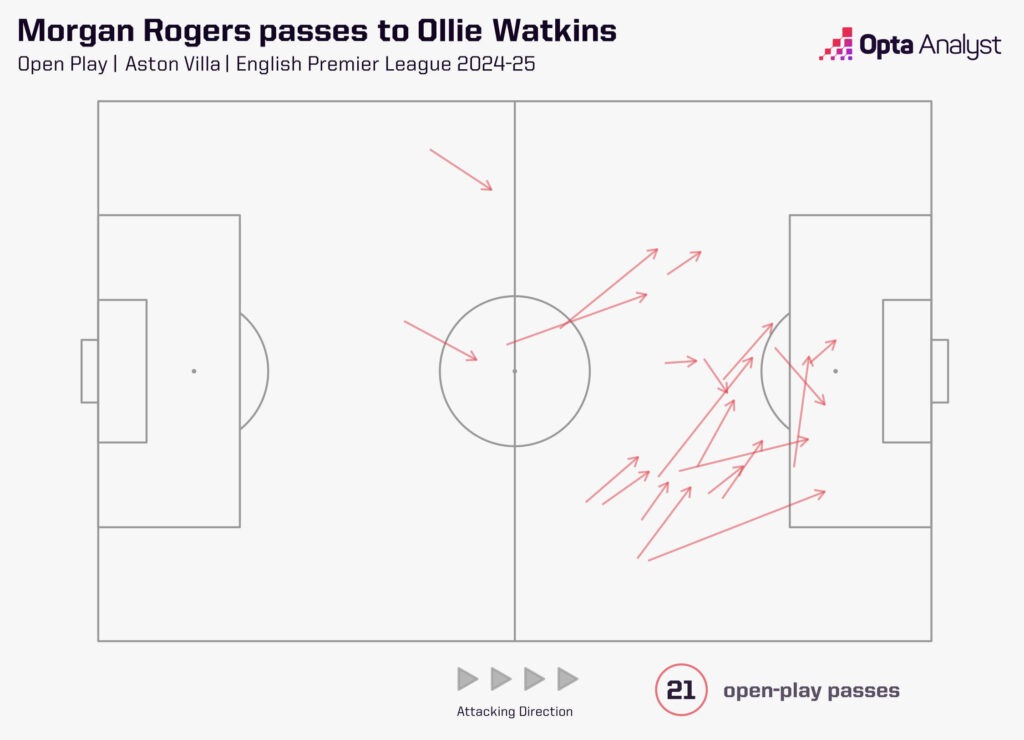
Rogers has passed to Watkins 21 times in open play this season. Now, that might not sound like much, but that’s four more than any other nominal attacking midfielder to a striker in the Premier League this term, while Watkins hasn’t passed to anyone more than he has Rogers (eight).
Granted, perhaps that shouldn’t be surprising given the areas they occupy, but it still reflects well on them, especially given Rogers has created five chances for Watkins – there’s only five instances of players setting up more chances for a specific teammate this term.
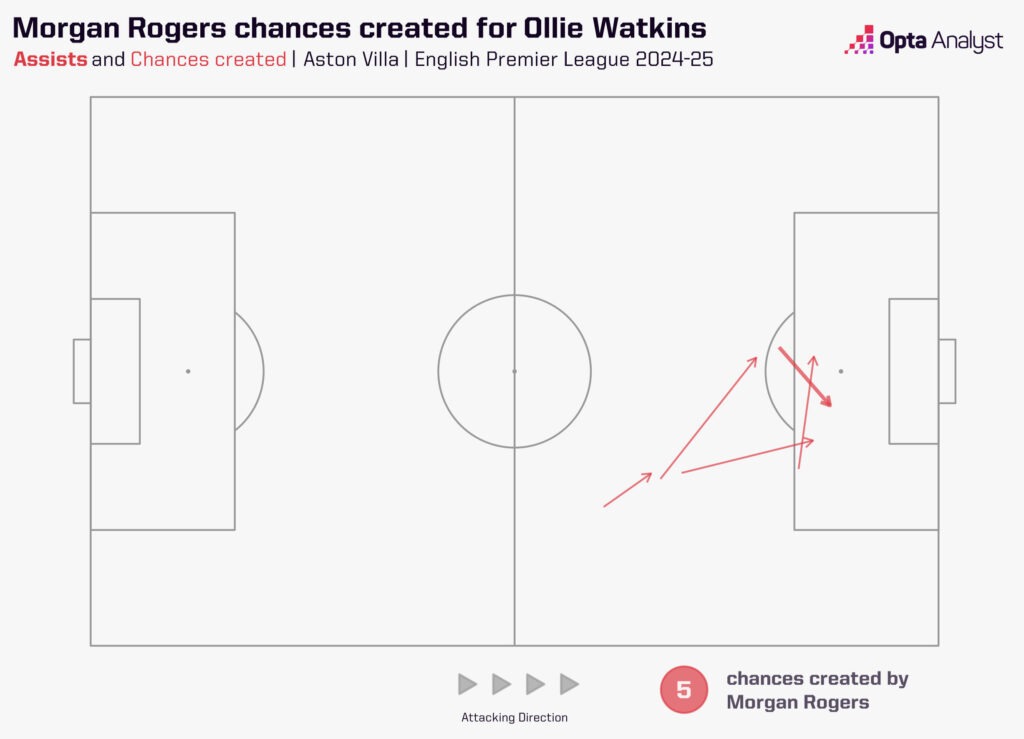
However, as with any developing player – especially one with the bravery to take risks – there are areas for growth. Rogers has lost possession 16 times in his own half this term, the fourth most of all Premier League players, while his nine unsuccessful take-ons in his own half is the second most.
There are caveats to these points, of course. Rogers’ 15 take-on attempts in his own half is the second highest and his success rate of 40% in the defensive half is actually about average (minimum five take-on attempts in own half), while he’s generally quite a high-risk player and so losing possession fairly often is to be expected.
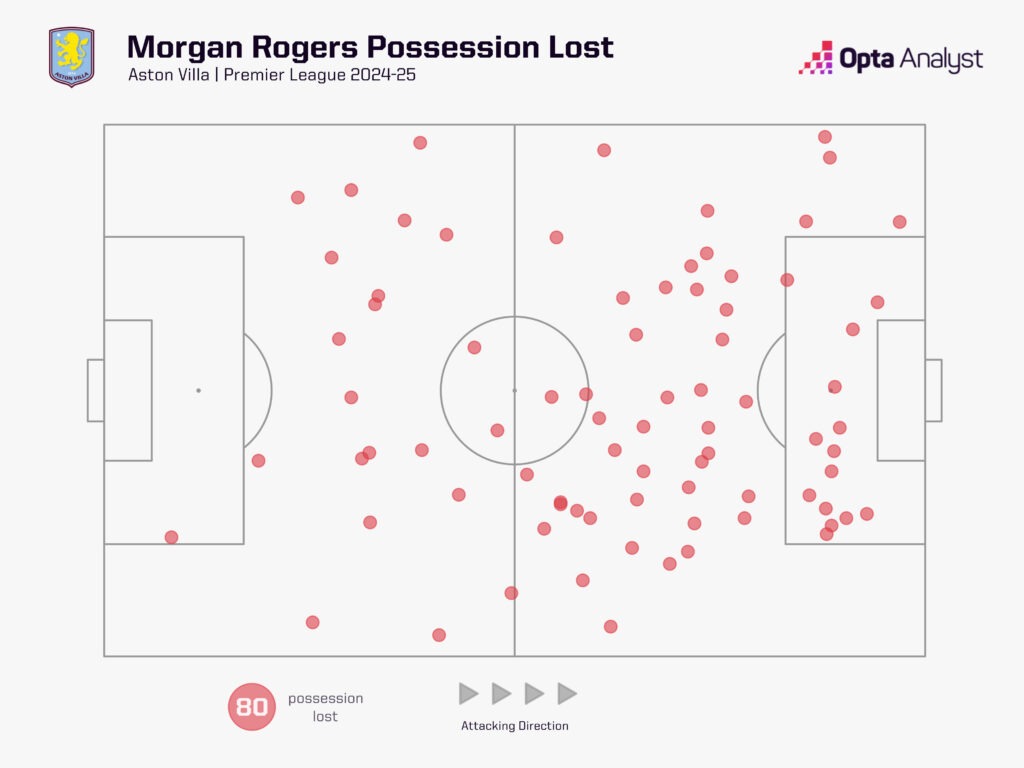
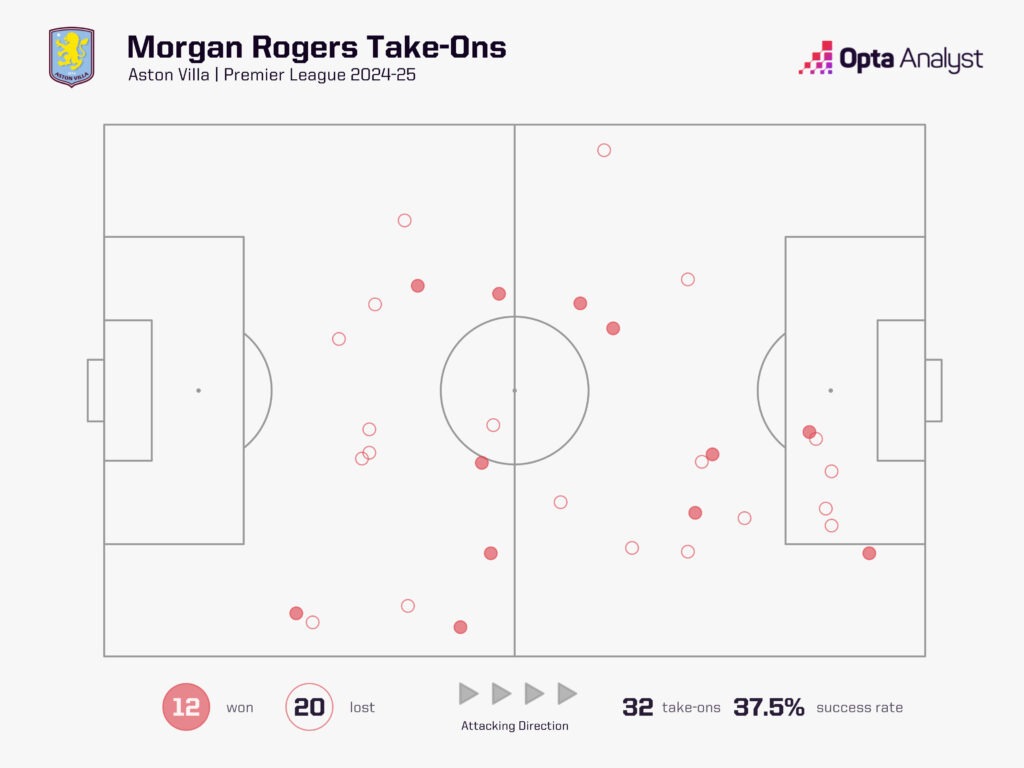
For Villa, there’s a balance to be found because they’d obviously prefer he didn’t lose the ball at all in their own half, but they also don’t want to lose elements that might set Rogers apart. There are times when he could be accused of taking risks in dangerous areas and inviting pressure onto the team, however.
For the most part, though, Rogers’ positives far outweigh the negatives and he’s remaining influential in attack, with his 3.5 shot-creating actions per 90 minutes a decent return that puts him level with the likes of Bryan Mbeumo, Kai Havertz and Mohammed Kudus; decent company, then.
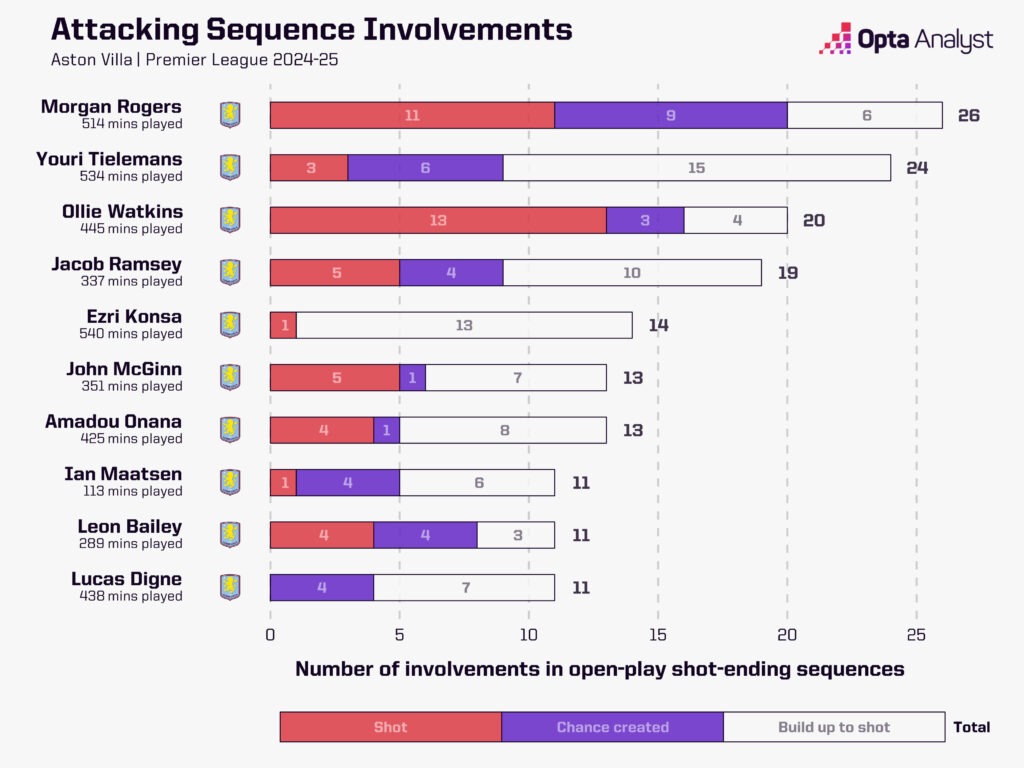
He’s still young, fairly inexperienced at this level and certainly not the finished article. But that he’s already such a force of nature and willing to take games by the scruff of the neck is a huge asset, reflects well on his mentality and provides a glimpse of immense potential.
Rogers’ adaptation to the Premier League has been swift; if he continues to improve at the rate he has over the past year or so, the sky’s the limit.

Enjoy this? Subscribe to our football newsletter to receive exclusive weekly content. You should also follow our social accounts over on X, Instagram, TikTok and Facebook.
